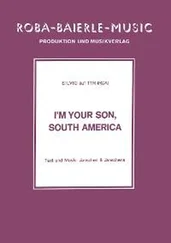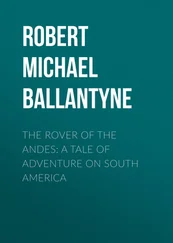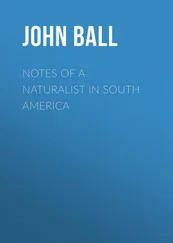Charles Waterton - Wanderings in South America
Здесь есть возможность читать онлайн «Charles Waterton - Wanderings in South America» — ознакомительный отрывок электронной книги совершенно бесплатно, а после прочтения отрывка купить полную версию. В некоторых случаях можно слушать аудио, скачать через торрент в формате fb2 и присутствует краткое содержание. Жанр: Путешествия и география, История, foreign_edu, foreign_antique, foreign_prose, на английском языке. Описание произведения, (предисловие) а так же отзывы посетителей доступны на портале библиотеки ЛибКат.
- Название:Wanderings in South America
- Автор:
- Жанр:
- Год:неизвестен
- ISBN:нет данных
- Рейтинг книги:5 / 5. Голосов: 1
-
Избранное:Добавить в избранное
- Отзывы:
-
Ваша оценка:
- 100
- 1
- 2
- 3
- 4
- 5
Wanderings in South America: краткое содержание, описание и аннотация
Предлагаем к чтению аннотацию, описание, краткое содержание или предисловие (зависит от того, что написал сам автор книги «Wanderings in South America»). Если вы не нашли необходимую информацию о книге — напишите в комментариях, мы постараемся отыскать её.
Wanderings in South America — читать онлайн ознакомительный отрывок
Ниже представлен текст книги, разбитый по страницам. Система сохранения места последней прочитанной страницы, позволяет с удобством читать онлайн бесплатно книгу «Wanderings in South America», без необходимости каждый раз заново искать на чём Вы остановились. Поставьте закладку, и сможете в любой момент перейти на страницу, на которой закончили чтение.
Интервал:
Закладка:
He was buried on his birthday, the 3rd of June, between two great oaks at the far end of the lake, the oldest trees in the park. He had put up a rough stone cross to mark the spot where he wished to be buried. Often on summer days he had sat in the shade of these oaks watching the kingfishers. “Cock Robin and the magpies,” he said to me as we sat by the trees one day, “will mourn my loss, and you will sometimes remember me when I lie here.” At the foot of the cross is a Latin inscription which he wrote himself. It could hardly be simpler: “Pray for the soul of Charles Waterton, whose tired bones are buried near this cross.” The dates of his birth and death are added.
Walton Hall is no longer the home of the Watertons, the oaks are too old to flourish many years more, and in time the stone cross may be overthrown and the exact burial place of Waterton be forgotten; but his “Wanderings in South America” and his “Natural History Essays” will always be read, and are for him a memorial like that claimed by the poet he read oftenest—
“quod nec Jovis ira, nec ignes,
Nec poterit ferrum, nec edax abolere vetustas.”
FIRST JOURNEY
—“nec herba, nec latens in asperis
Radix fefellit me locis.”
In the month of April, 1812, I left the town of Stabroek, to travel through the wilds of Demerara and Essequibo, a part of ci-devant Dutch Guiana, in South America.
The chief objects in view were to collect a quantity of the strongest wourali-poison; and to reach the inland frontier fort of Portuguese Guiana.
It would be a tedious journey for him who wishes to travel through these wilds to set out from Stabroek on foot. The sun would exhaust him in his attempts to wade through the swamps, and the mosquitos at night would deprive him of every hour of sleep.
The road for horses runs parallel to the river, but it extends a very little way, and even ends before the cultivation of the plantation ceases.
The only mode then that remains is to proceed by water; and when you come to the high lands, you may make your way through the forest on foot, or continue your route on the river.
After passing the third island in the river Demerara, there are few plantations to be seen, and those not joining on to one another, but separated by large tracts of wood.
The Loo is the last where the sugar-cane is growing. The greater part of its negroes have just been ordered to another estate; and ere a few months shall have elapsed all signs of cultivation will be lost in under-wood.
Higher up stand the sugar-works of Amelia’s Waard, solitary and abandoned; and after passing these there is not a ruin to inform the traveller that either coffee or sugar has been cultivated.
From Amelia’s Waard an unbroken range of forest covers each bank of the river, saving here and there where a hut discovers itself, inhabited by free people of colour, with a rood or two of bared ground about it; or where the wood-cutter has erected himself a dwelling, and cleared a few acres for pasturage. Sometimes you see level ground on each side of you for two or three hours at a stretch; at other times a gently sloping hill presents itself; and often, on turning a point, the eye is pleased with the contrast of an almost perpendicular height jutting into the water. The trees put you in mind of an eternal spring, with summer and autumn kindly blended into it.
Here you may see a sloping extent of noble trees, whose foliage displays a charming variety of every shade from the lightest to the darkest green and purple. The tops of some are crowned with bloom of the loveliest hue; while the boughs of others bend with a profusion of seeds and fruits.
Those whose heads have been bared by time, or blasted by the thunder-storm, strike the eye, as a mournful sound does the ear in music; and seem to beckon to the sentimental traveller to stop a moment or two, and see that the forests which surround him, like men and kingdoms, have their periods of misfortune and decay.
The first rocks of any considerable size that are observed on the side of the river are at a place called Saba, from the Indian word, which means a stone. They appear sloping down to the water’s edge, not shelvy, but smooth, and their exuberances rounded off, and, in some places, deeply furrowed, as though they had been worn with continual floods of water.
There are patches of soil up and down, and the huge stones amongst them produce a pleasing and novel effect. You see a few coffee-trees of a fine luxuriant growth; and nearly on the top of Saba stands the house of the post-holder.
He is appointed by government to give in his report to the protector of the Indians of what is going on amongst them, and to prevent suspicious people from passing up the river.
When the Indians assemble here the stranger may have an opportunity of seeing the aborigines dancing to the sound of their country music, and painted in their native style. They will shoot their arrows for him with an unerring aim, and send the poisoned dart from the blow-pipe true to its destination; and here he may often view all the different shades, from the red savage to the white man, and from the white man to the sootiest son of Africa.
Beyond this post there are no more habitations of white men, or free people of colour.
In a country so extensively covered with wood as this is, having every advantage that a tropical sun and the richest mould, in many places, can give to vegetation, it is natural to look for trees of very large dimensions; but it is rare to meet with them above six yards in circumference. If larger have ever existed, they had fallen a sacrifice either to the axe or to fire.
If, however, they disappoint you in size, they make ample amends in height. Heedless and bankrupt in all curiosity must he be who can journey on without stopping to take a view of the towering mora. Its topmost branch, when naked with age or dried by accident, is the favourite resort of the toucan. Many a time has this singular bird felt the shot faintly strike him from the gun of the fowler beneath, and owed his life to the distance betwixt them.
The trees which form these far-extending wilds are as useful as they are ornamental. It would take a volume of itself to describe them.
The green-heart, famous for its hardness and durability; the hackea, for its toughness; the ducalabali, surpassing mahogany; the ebony and letter-wood vieing with the choicest woods of the old world; the locust tree, yielding copal; and the hayawa and olon trees, furnishing a sweet-smelling resin, are all to be met with in the forest, betwixt the plantations and the rock Saba.
Beyond this rock the country has been little explored; but it is very probable that these, and a vast collection of other kinds, and possibly many new species, are scattered up and down, in all directions, through the swamps, and hills, and savannas of ci-devant Dutch Guiana.
On viewing the stately trees around him the naturalist will observe many of them bearing leaves, and blossoms, and fruit, not their own.
The wild fig-tree, as large as a common English apple-tree, often rears itself from one of the thick branches at the top of the mora; and when its fruit is ripe, to it the birds resort for nourishment. It was to an undigested seed, passing through the body of the bird which had perched on the mora, that the fig-tree first owed its elevated station there. The sap of the mora raised it into full bearing; but now, in its turn, it is doomed to contribute a portion of its own sap and juices towards the growth of different species of vines, the seeds of which, also, the birds deposited on its branches. These soon vegetate, and bear fruit in great quantities; so what with their usurpation of the resources of the fig-tree, and the fig-tree of the mora, the mora, unable to support a charge which nature never intended it should, languishes and dies under its burden; and then the fig-tree, and its usurping progeny of vines, receiving no more succour from their late foster-parent, droop and perish in their turn.
Читать дальшеИнтервал:
Закладка:
Похожие книги на «Wanderings in South America»
Представляем Вашему вниманию похожие книги на «Wanderings in South America» списком для выбора. Мы отобрали схожую по названию и смыслу литературу в надежде предоставить читателям больше вариантов отыскать новые, интересные, ещё непрочитанные произведения.
Обсуждение, отзывы о книге «Wanderings in South America» и просто собственные мнения читателей. Оставьте ваши комментарии, напишите, что Вы думаете о произведении, его смысле или главных героях. Укажите что конкретно понравилось, а что нет, и почему Вы так считаете.












